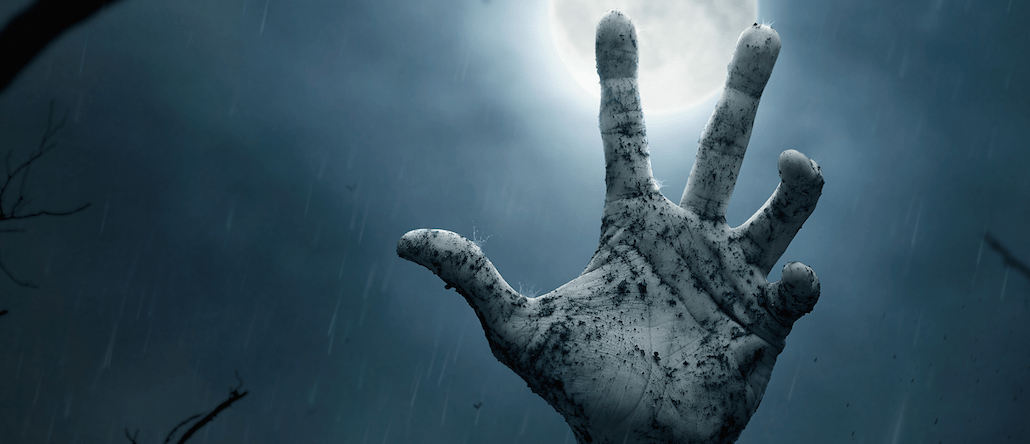Save 50% on a 3-month Digiday+ membership. Ends Dec 5.

Mark Duffy has written the copyranter blog for 10 years and is currently an unemployed but freelancing copywriter with 20-plus years of experience. His hockey wrist shot is better than yours.
The “content” being produced is an embarrassment to the advertising industry, and more importantly, to the brands sponsoring it. All of it falls into one of two general categories: Dumb or Boring. Yet few ad creative leaders are speaking out about it. That’s because in just four years, this financial savior of Web publishing has become a big revenue stream for everyone involved (except the brands themselves, but shh, don’t bring that up) and it’s getting bigger fast; nobody dares rock the boat.
When I say native advertising sucks, I’m talking creatively, because that’s what I know: Creative. I’ve been a professional ad creative for 25-plus years. I’ve created hundreds of good ads (and thousands of bad ones), I’ve won awards, I’ve judged awards shows, plus I’ve reviewed ads professionally for nine years. For the last year, I’ve been clicking on and reading/watching a lot of native ads on a lot of big media sites. And I’m tired of of shaking my head in disgust. Advertising creativity is being destroyed by this shit, destroyed by technology, destroyed by digital content creators, social media managers, in-house creative studios, moonlighting journalists and the clients themselves.
“So what, I hate ads,” you say. That’s a fair response. “But I do like listicle/GIF style sponsored content because I’m not being sold anything. And since I’m not being sold anything, I feel OK sharing it with my friends,” you also say. Although I think your entertainment bar is set exceptionally low, good for you and Godspeed.
Besides the deception and ethics factors of native advertising — which I personally don’t give a shit about, because, duh, I work in advertising, so I’m already morally suspect — what’s not OK with this type of sponsored content you see on big traffic sites like BuzzFeed and Upworthy is this: brand recall.
There haven’t been many independent studies of the effectiveness of native advertising because it’s difficult to measure. But one survey conducted last year found that two-thirds of those surveyed who recalled seeing a native ad remembered absolutely nothing about it, and 95 percent of them didn’t remember who the sponsor was. Ninety-five percent.
There are two reasons for this: 1. Most native ads are designed to not look like ads; they are designed to blend as seamlessly as possible with the editorial content. 2. The creativity on these native ads — and really, almost all branded content — sucks. They are specifically designed not to persuade, designed not to sell the brand or benefits of the brand.
Ad position: web_incontent_pos1
It is plain and simple a cop-out by the creators, a lazy cop-out from having to be both entertaining and persuasive — the definition of a good ad. And as all “traditional” trained advertising creatives know, making a good ad is hard work.
But you go right ahead and keep trumpeting those click-through rates and share numbers, digital innovators.
Why more creatives/agencies aren’t making truly funny, informative, creative branded content is a mystery to me. I guarantee you it would be more effective.
There is one creative who has been very outspoken about the current shitty digital advertising. John Hegarty, founding partner of the formally-great-now-still-above-average London ad agency Bartle Bogle Hegarty and creator of some of best ads in history, bemoans the current state of ad creativity:
“We’ve fallen in love with technology rather than technology being the slave of the idea. … In doing that we have lost the ability to convince people. We have confused persuasion with promotion. Our industry is about persuasion. That’s fantastic as long as you do it with truth and persuasion, that’s the most fantastic thing in the world.”
Ad position: web_incontent_pos2
Truth + Persuasion = Good Advertising. There you go, data-loving Tech Gurus, a math formula.
Bill Bernbach had something to say about bland me-too advertising: “If nobody notices your ad, everything else is academic.”
Native advertising is academic advertising. And in its current form, it doesn’t work. Period.
More in Marketing

Ulta, Best Buy and Adidas dominate AI holiday shopping mentions
The brands that are seeing the biggest boost from this shift in consumer behavior are some of the biggest retailers.

U.K. retailer Boots leads brand efforts to invest in ad creative’s data layer
For media dollars to make an impact, brands need ad creative that actually hits. More CMOs are investing in pre- and post-flight measurement.

‘AI is permeating everything we do’: How Guitar Center developed 2 AI tools this year
This summer, the company launched a chatbot called Rig Advisor to help customers find the right instruments and products.
Ad position: web_bfu





